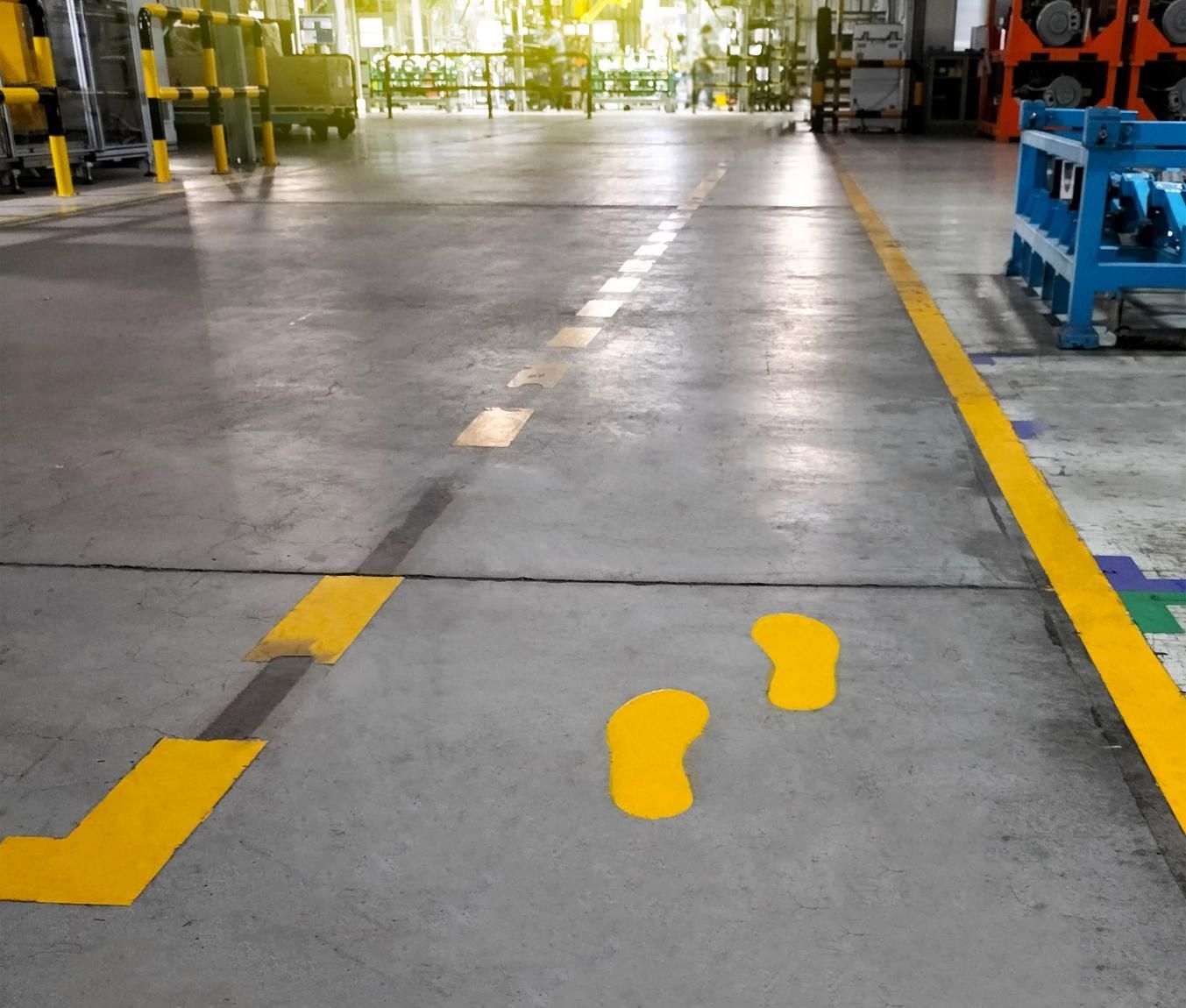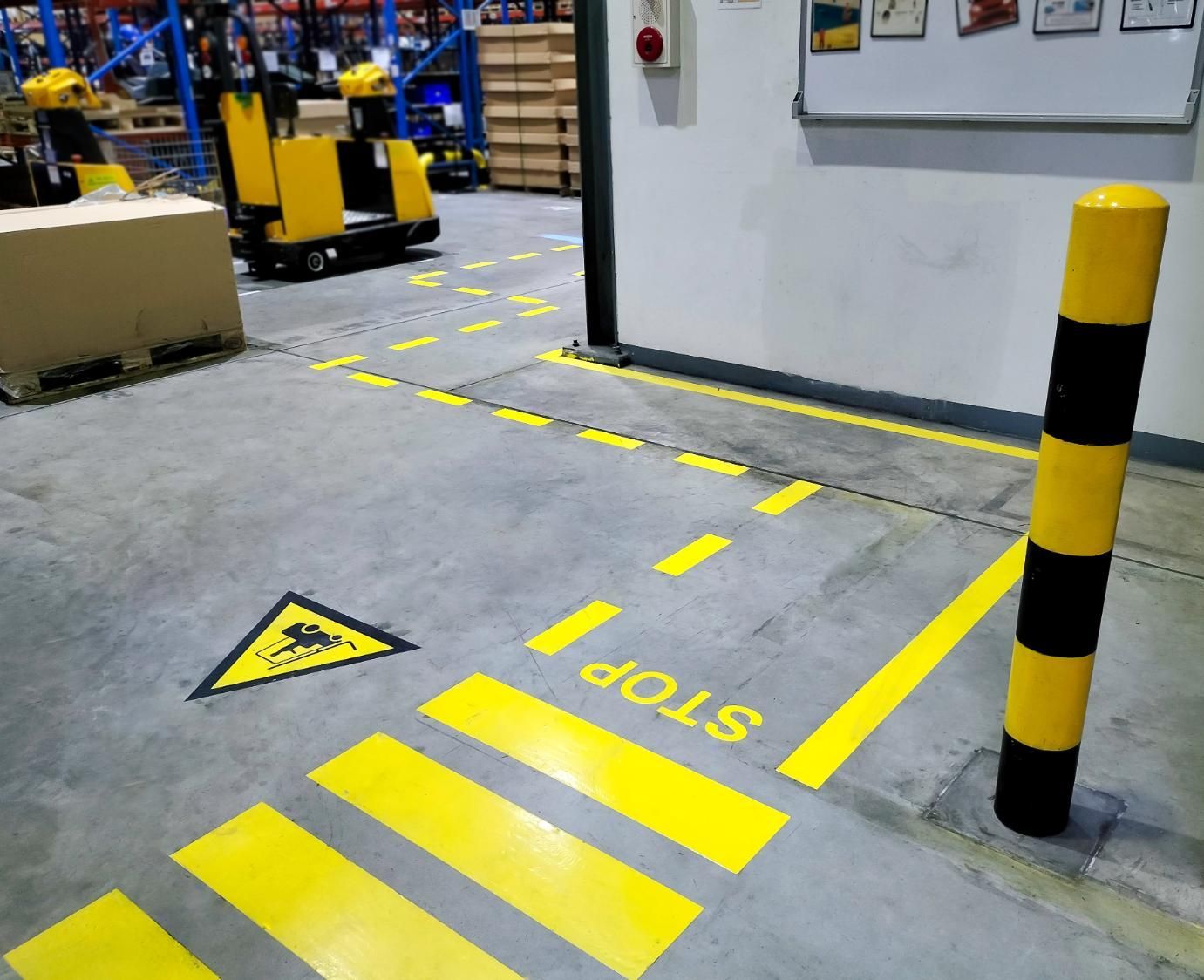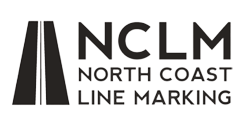North Coast Line Marking
Warehouse Safety in the Northern Rivers
- 24/7 Availability
- Free Quotes
- OH&S Compliant
Request a Call Back
Contact Us
Thank you for contacting North Coast Line Marking.
We will get back to you as soon as possible.
Please try again later.
Northern Rivers Warehouse Safety
In a busy warehouse, poorly marked floors can lead to serious hazards—confused walkways, missed exclusion zones and high risk for accidents or non-compliance. North Coast Line Marking provides tailored factory & warehouse safety line marking solutions across the Northern Rivers and South East Queensland regions, helping businesses stay safe, efficient and regulation-ready. Whether it’s forklift routes, pedestrian paths, or high-risk zones, we deliver high-visibility markings that stand up to heavy traffic and everyday wear. Our work ensures teams can move with confidence, reducing risk and keeping productivity on track.
Do you need to upgrade your safety zones or overhaul a warehouse layout? Call
0406 785 219 to book a site visit and get a free quote today.
Practical Safety Solutions Built for Workplaces
Every warehouse operates differently, which is why safety line marking should be tailored to suit your specific layout, workflow, and operational needs. At North Coast Line Marking, we create high-visibility, long-lasting markings that improve traffic flow, protect staff and help you meet OH&S obligations. Whether your warehouse handles foot traffic, forklifts, or a mix of both, we can mark out clearly defined pedestrian walkways, forklift lanes, exclusion zones, loading bays and emergency exit routes.
To further enhance visibility and compliance, we also apply stencilled signage, directional arrows, colour-coded areas and reflective finishes. These extra touches help ensure everyone on site can navigate safely and efficiently, especially in busy or shared zones. Every job is planned with care, taking into account your operations, hazard areas, and any industry-specific requirements.
Our warehouse safety line marking services include:
- Pedestrian walkways and forklift travel lanes
- Hazard zones and exclusion areas
- Loading docks and pallet zones
- Emergency exit paths and access ways
- Stencilled text and directional arrows
- Colour-coded and reflective safety markings
Need us to work after hours or on weekends? No problem. We offer flexible scheduling to minimise disruption to your team. Let’s make your warehouse safer, smarter and easier to manage.
Contact us today!
Can warehouse line marking be done without shutting down operations?
Yes, warehouse line marking can often be completed without full shutdowns. Many providers offer flexible, after-hours or weekend services to minimise disruption to business operations. In some cases, the work can be staged section-by-section while staff continue operating in other areas.
Fast-drying or low-odour materials can also help reduce downtime. Clear communication and planning between the warehouse manager and marking crew are key to maintaining safety and productivity during the process.
What types of markings are typically used in warehouses?
Common warehouse markings include pedestrian walkways, forklift routes, pallet zones, exclusion areas, loading docks, hazard stripes, and emergency egress paths. Arrows and directional signage help guide traffic, while colour-coded zones (e.g., yellow for caution, red for danger, green for safe access) provide immediate visual cues.
Stencilled text like "No Entry," "Keep Clear," or "High Voltage" may also be used to reinforce rules. These markings are usually applied using industrial-grade paints or epoxy-based materials for added durability.
What are the legal requirements for warehouse line marking in Australia?
In Australia, warehouse line marking must comply with OH&S standards, including those outlined in the Work Health and Safety (WHS) Regulations and relevant state-based codes. These regulations require clear identification of pedestrian pathways, vehicle routes (such as forklifts), exclusion zones, emergency exits, and storage areas. Line marking helps employers meet their duty of care to create a safe working environment, reducing the risk of accidents and injuries. The use of colours, symbols, and stencils must also follow industry norms for visibility and communication.





